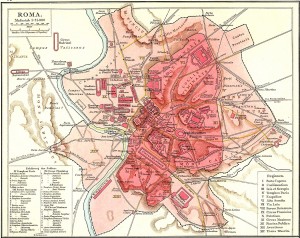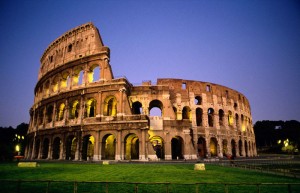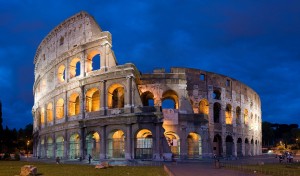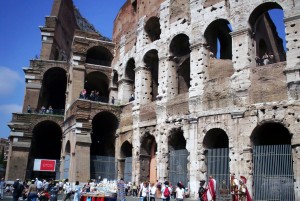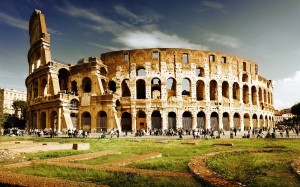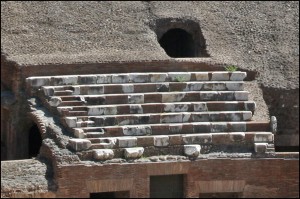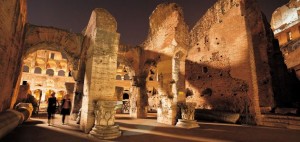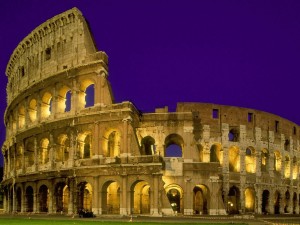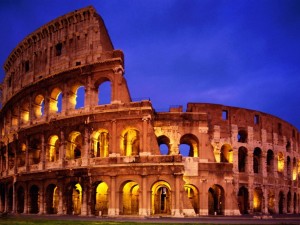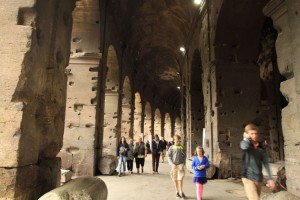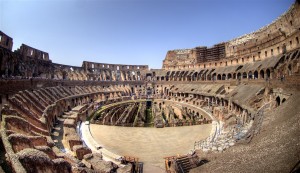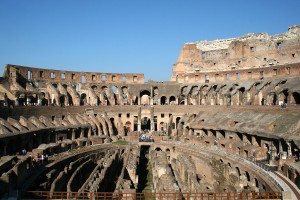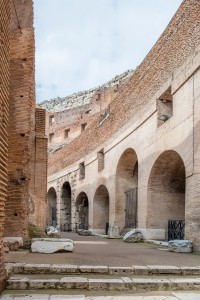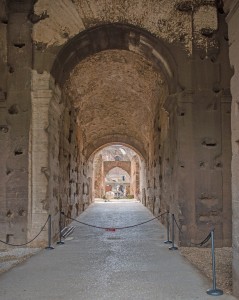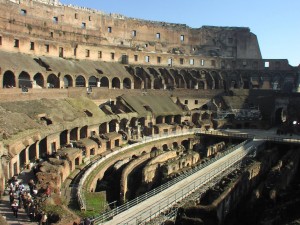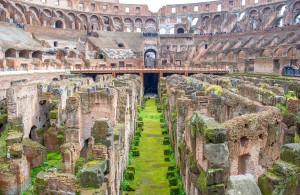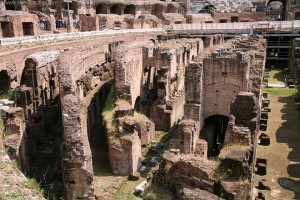Written by Soudip
October 6th 2014Other Places
You Are Here
Home > Italy > Bourbon Tunnel Historical Facts and PicturesColosseum Historical Facts and Pictures
Residing at the center of Rome, the Colosseum was the largest amphitheater of the Roman Empire. Built of stone and concrete, this elliptical amphitheater is one of the greatest specimens of supreme Roman architecture and engineering.
Structure and Construction
Constructed within the reign of the Flavian dynasty, the Colosseum is also known as the Flavian Amphitheater. Emperor Vespasian initiated the construction of this amphitheater in 70 AD. The construction finished in 80 AD, under the reign of Titus, the successor and heir of Vespasian. It was further modified in the reign of Domitian.
With a circumference of 6 acres, the Colosseum is entirely a freestanding structure with a length of 189 meters and a width of 156 meters. Surrounded by a 5-meter high wall with rose-tiered seats, the oval-shaped central arena is 87 m X 55 m. The amphitheater consists of 80 entrances, 76 of which were made for the general crowd, while the remaining 4 axial entrances were used by Imperial members and the elite. These 4 axial entrances were richly decorated with stucco reliefs.
Interior of the Colosseum
It was believed that the Colosseum had the capacity to accommodate 87,000 people at a single time. The tiered seating arrangement reflected the firmly stratified feature of the Roman society. The Vestal Virgins and the Emperor were provided special boxes on the south and the north ends of the amphitheater, which offer the best view of the arena. A podium flanks this royal section, which was only reserved for the senatorial class, who were also allowed to carry their own seats. The above tier, known as the maenianum primum, was occupied by knights and non-senatorial noble class. The next section, maenianum secundum, was divided between two parts, the upper section was meant for the poor and the lower for the wealthy Roman citizens. Later another section maenianum secundum in legneis was added at the very top of the amphitheater by Domitian, which was largely occupied by slaves.
This iconic symbol of Imperial Rome was used for executions, animal hunts, dramas and the famous gladiatorial contests. Although the structure was largely affected by earthquakes and stone robbers, the partially ruined present condition is still a popular tourist attraction in Rome. The complex was chosen as one of the New 7 Wonders of the World in a competition, organized by New Open World Corporation in 2007.
Category
ItalyWritten by Soudip
October 6th 2014










